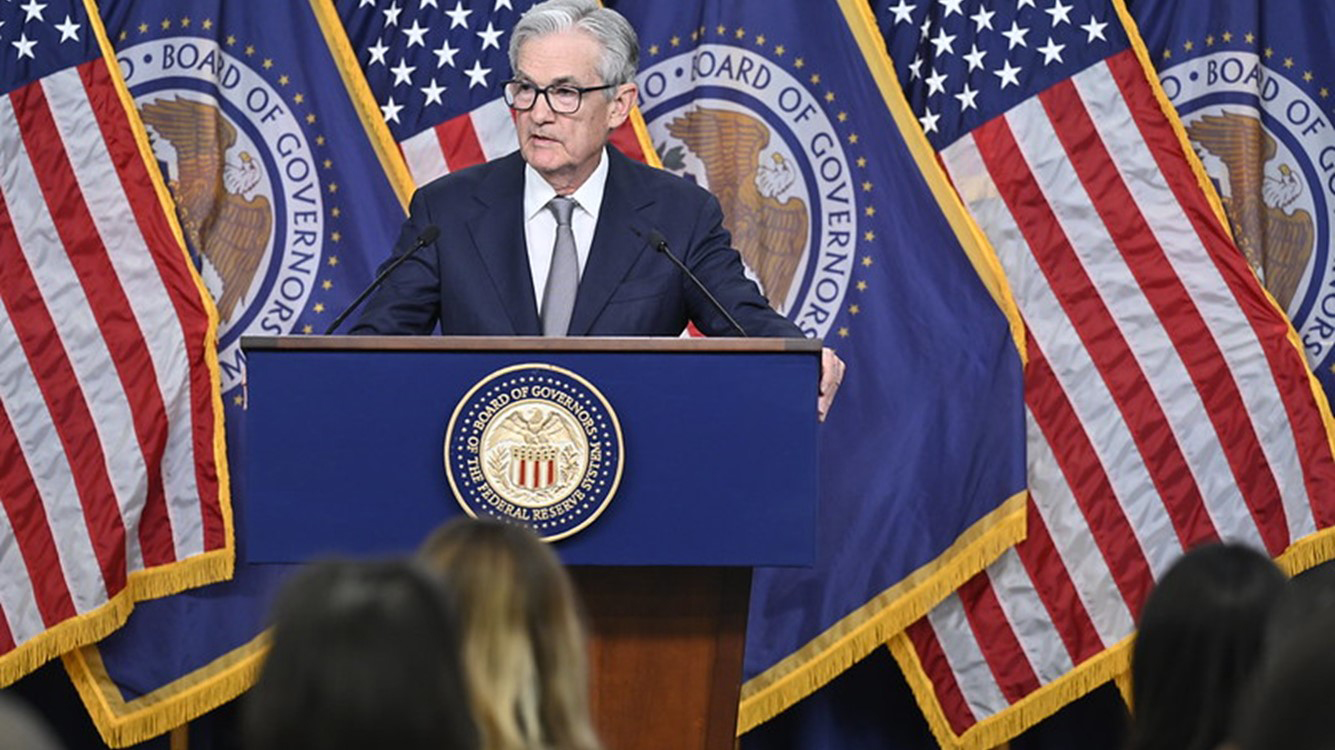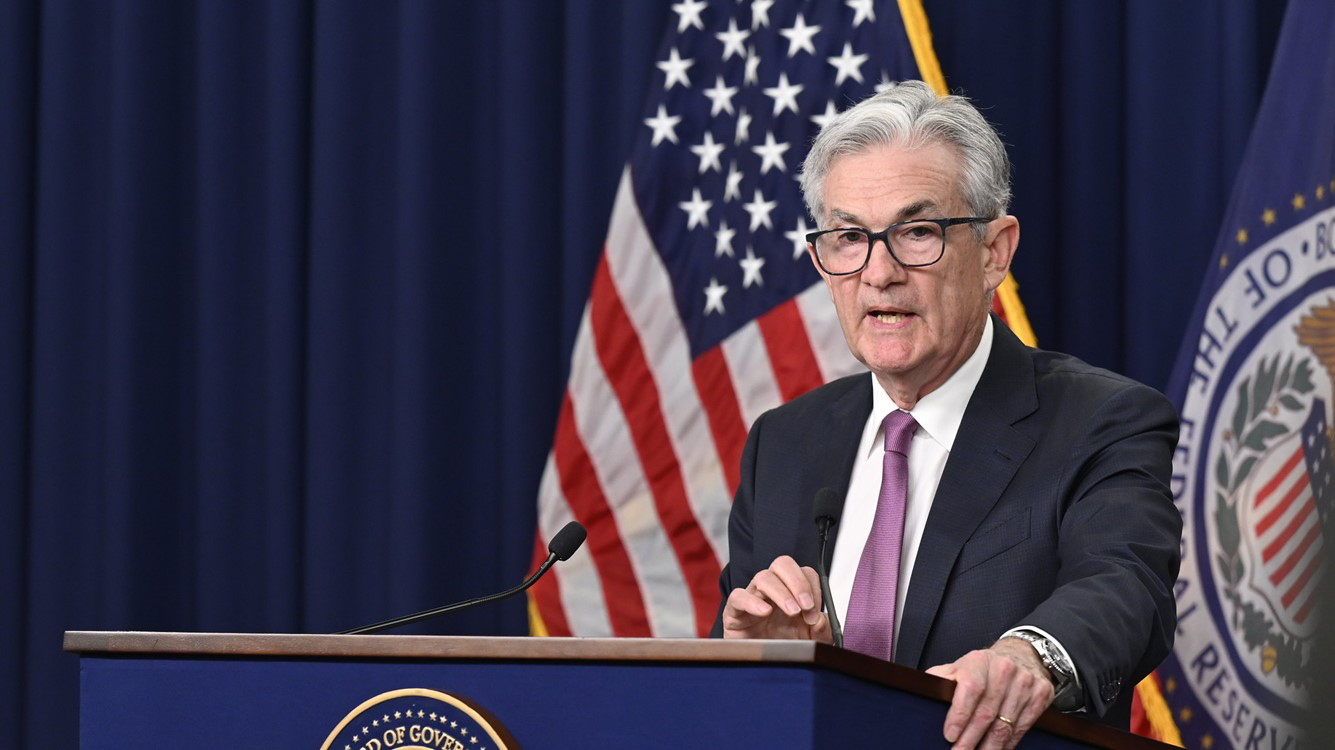The Fed is done!
The bias is now to cut rates sooner than later.

December 13, 2023
The Federal Open Market Committee (FOMC) voted unanimously to hold rates steady for its third consecutive meeting in December and signaled what we have been arguing for some time: We have hit the peak in short-term rates for this hiking cycle, with the fed funds target in the 5.25%-5.5% range. A key part of the statement was the Fed's assessment of inflation, which now says that "inflation has eased over the past year but remains elevated." (Emphasis added to underscore the Fed's shift in language and optimism over the remarkably fast slowdown in inflation we have seen.) The Fed also added one key word, "any," when it discussed whether additional policy tightening was needed, revealing members' own view that they are done with rate hikes. Chairman Jay Powell confirmed that in the question-and-answer period, saying the word "any" was added to reflect the view that participants felt that additional rate hikes were not likely necessary. However, they have left the smallest possibility of raising rates again if the progress on inflation stalls.
The Fed released the new summary of economic projections. Growth was revised up for 2023 substantially, reflecting the surge in growth we saw over the summer. The forecast implies a fairly significant slowdown in the fourth quarter, which Chairman Jay Powell confirmed in his statement at the press conference following the meeting. This is in line with our own forecast for a slowdown in growth to less than 1% in the fourth quarter from 5.2% in the third quarter. The forecast for 2024 was revised down slightly and remains below the economy's potential to grow for the year, which pushes the unemployment rate up modestly. The increase in unemployment is expected to come more from a slowdown in hiring and an inability to rapidly absorb those coming into the labor force as opposed to a surge in layoffs. However, it is expected to slow quite significantly after we get beyond the catch-up in economic activity following the actors' and UAW strikes over the summer and into the fall.
The Summary of Economic Projections removed the rate hike that was in the trajectory for short-term rates in 2023; the consensus is for three cuts in short-term rates in 2024. That is two additional rate cuts than participants had in their forecast in September. One is due to the fact that they removed a hike in rates prior to the end of 2023. The dispersion on the trajectory for rate cuts was large; eight of the participants at the meeting expected less than three cuts, five expected more than three cuts and six expected three. The Fed's range on the non-inflationary rate came down a bit but remains above the levels we saw earlier in the year. The Fed looks like it is moving toward a non-inflationary rate of 3% from 2.5%. That said, the Fed was never able to hold rates above 2% for any length of time. It was forced to do a U-turn and cut rates in 2019 after raising rates in 2018. The fed funds rate was targeted in the 1.5%-1.75% range in February 2020. We are not likely to get back to those lows or the zero lower bound if the Fed is correct and we do actually achieve a soft landing.
A recession would prompt a more aggressive rate cutting cycle. Even then, we are not expecting short-term rates to return to the zero lower bound short of another financial crisis.
Chairman Powell underscored that "we're aware of the risk that we would hang on too long," signaling that the bias is now to cut rates sooner than later. That marks a shift from the waffling that we saw when Powell was asked about whether another rate hike was possible at the November 1 press conference.
Powell underscored that you want to cut rates before the Fed gets to its 2% target; some measures are already there. Those comments, coupled with the good news on inflation we have seen, has prompted financial markets to increase the probability of the first cut to March. We still think that the Fed will hold off until May, but if the good news continues to come in as it has, the Fed will be cutting sooner. The issue then becomes how slowly the Fed actually cuts rate.
Powell underscored that, although rate cuts are in the cards, there is no discussion of changing their policy on reducing their bloated balance sheet. He argued that rate cuts and reductions in the balance sheet are on two different tracks. The only reason to cut rates and stop the reductions in the balance sheet simultaneously would be a severe and abrupt deterioration in economic conditions, which does not appear in the cards.
The shift...allows the Fed to have its cake and eat it too.
Diane Swonk, KPMG Chief Economist
Bottom Line
The Fed thinks that it is done with rate hikes and is more worried about overdoing it than it was in the past. It knew financial markets would rally and credit conditions would ease in response to its more dovish stance. It is clearly comfortable with that outcome. The Fed would also like to avoid cutting rates only to have to reverse course and raise them again - that is the worst sin a central banker can make. The shift to a dovish stance allows the Fed to have its cake and eat it too. It can avoid overdoing rate hikes and triggering a recession, while keeping options open on how long it holds rates at their current level. That enables it to hedge against a reacceleration in inflation. The forecast is still for the first rate cut in May, but the risk is it could be sooner. Either way, the descent on rates is still expected to be much slower than the ascent. That has not changed.
Explore more

Fed leans into optionality
Markets rallied and bond yields fell in response to the Federal Reserve’s decision to pause.

KPMG Economics
A source for unbiased economic intelligence to help improve strategic decision-making.

After the fall: A structural change watch list
Inflation and higher rates are plaguing developed and developing countries alike.
Meet our team

Subscribe to insights from KPMG Economics
KPMG Economics distributes a wide selection of insight and analysis to help businesses make informed decisions.
